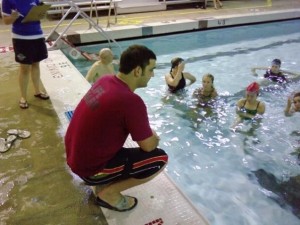A child might be at risk for secondary drowning after an incident in the water. This might take up to 24 hours to develop. The issue is usually due to water in the lungs of the child. Inhaling even small amounts of water can cause the lungs to become inflamed. The airway will start to spasm and constrict which results to difficulty breathing. The child might even suffocate. A child with water the lungs might not wake up if he/she sleeps.
Secondary drowning can occur even if drowning is not involved. A child might inhale water accidentally while playing in the pool or even in a bathtub. Remember that it only takes an inch of water for a young child to drown. In addition, a child at play might not recall inhaling water.
Indications of secondary drowning
Being aware of the indications of secondary drowning can save the life of a child. Bring the child to the nearest emergency department if any of these warning signs are present:
- Throwing up after swimming
- Frequent episodes of coughing after swimming
Secondary drowning can occur even if drowning is not involved. - Behavioral changes such as feeling sick or disoriented
- Feeling unusually sleepy after swimming
Management
The doctor will check the lungs of the child for any fluid and manage the inflammation. The child might require oxygen, IV fluids and medications. Oftentimes, a ventilator is needed to assist with breathing until the inflammation subsides and the child is in a stable condition.
A child also requires immediate assessment in the emergency department if:
- Submerged under water and struggled to reach the surface
- Lost consciousness in the water
- Needed rescuing from a lifeguard
- Could not recall the details of what happened while in the water
Remember that a child should still be taken to the emergency department even if he/she seems to be recovering.
Disclaimer / More Information
The information posted on this page on secondary drowning is for learning and educational purposes only. To learn to manage drowning emergencies, register for first aid training at one of our training centers located throughout Canada. The training centers are in Edmonton, Red Deer, Calgary, Vancouver, Kelowna, Surrey, Winnipeg, Toronto, Ottawa and Halifax.

